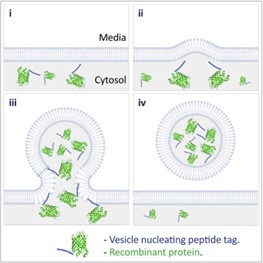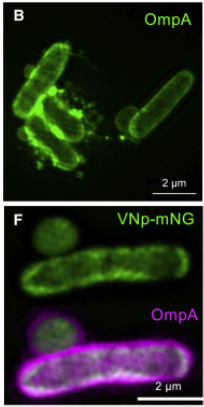
The genes in some bacteria cells can be modified so that the bacteria produce functional proteins. These are a type of protein that are involved in the biological function of living organisms, and they range from medicines to haemoglobin in our blood. E. coli is a cheap and easy to culture bacteria with a wide range of strains and tools that have been developed for the production of a variety of functional proteins, primarily for medical and biotechnology applications. For example, E. coli can be bioengineered to produce Etanercept, a protein that can be used to manage and treat autoimmune conditions like rheumatoid arthritis.
However, the traditional method of producing functional proteins inside E. coli has a number of problems when scaled up for mass production. One of these problems is that what carries the functional proteins to the outside of the cell is not “happy” to perform this task. Usually, it terminates or alters the protein you are attempting to extract, making the protein purification process more difficult.
Scientists from the University of Kent, Fujifilm-Diosynth Biotechnologies, and the CLF have explored an alternative method of extracting these functional proteins from E. coli that has promise as a functional protein mass production method. The main difference the team made to the traditional method, was adding a simple peptide tag to the functional protein that simplifies the protein extraction process.

As seen in the first figure, the functional proteins are produced near the outer membrane inside the cell in such a way that they form a vesicle (a protective bubble using the cell’s outer membrane). This vesicle then protects the proteins outside of the E. coli cell, making extraction easier. This approach allows production of the functional proteins at high yields compared to the currently used traditional method.
This mechanism was discovered with the help of
Octopus’s Structured Illumination Microscopy equipment, which gave super resolution performance imaging for resolving the membrane structure of the
E. coli cells being studied. Images like those in the second figure were produced by this equipment, and show the vesicle containing the functional proteins.
The team have plans to further investigate this method outlined in their publication, by seeking to better understand the biological mechanism of vesicle transport of the functional protein. They hope that further understanding will enable this method to be scaled up for industry use, with applications ranging from drug delivery and vaccination to isolation and storage of proteins.
